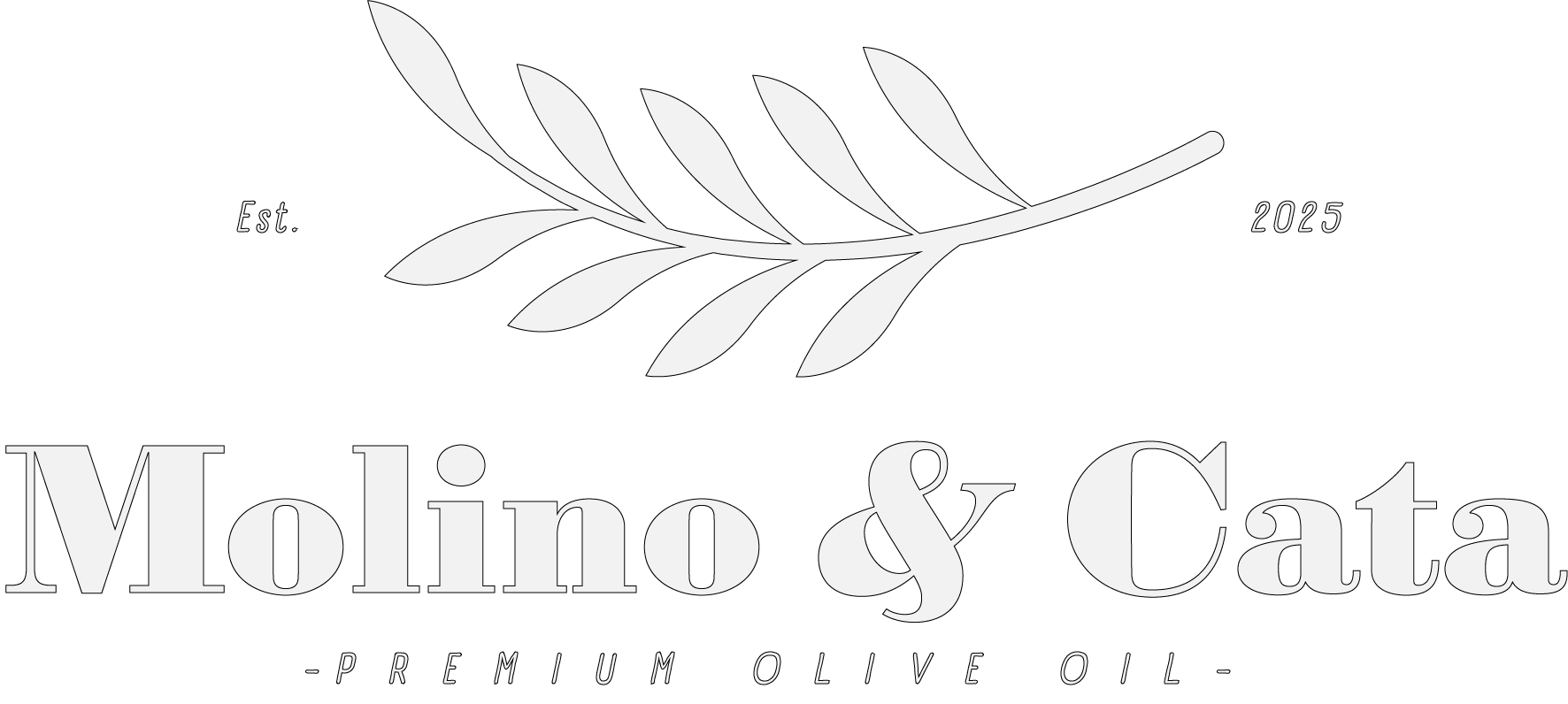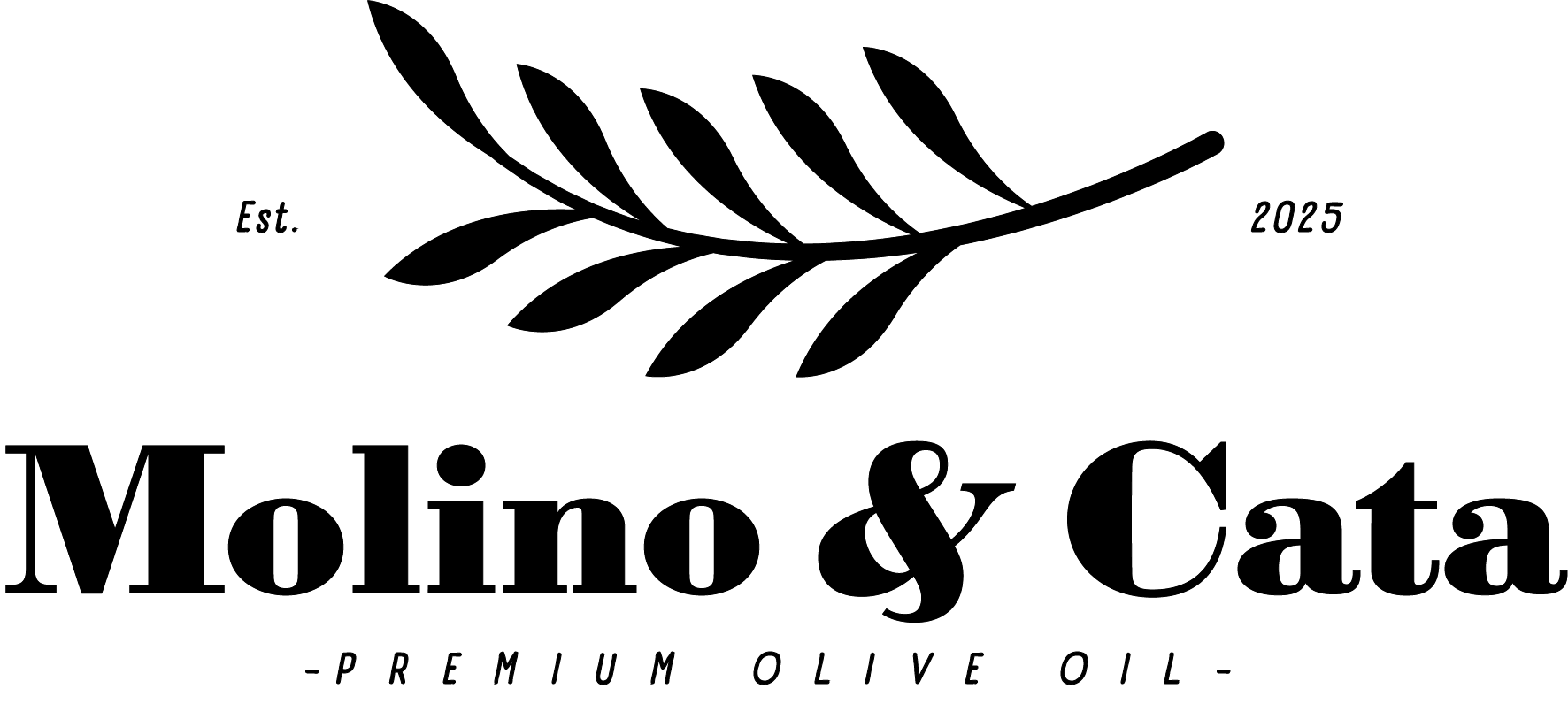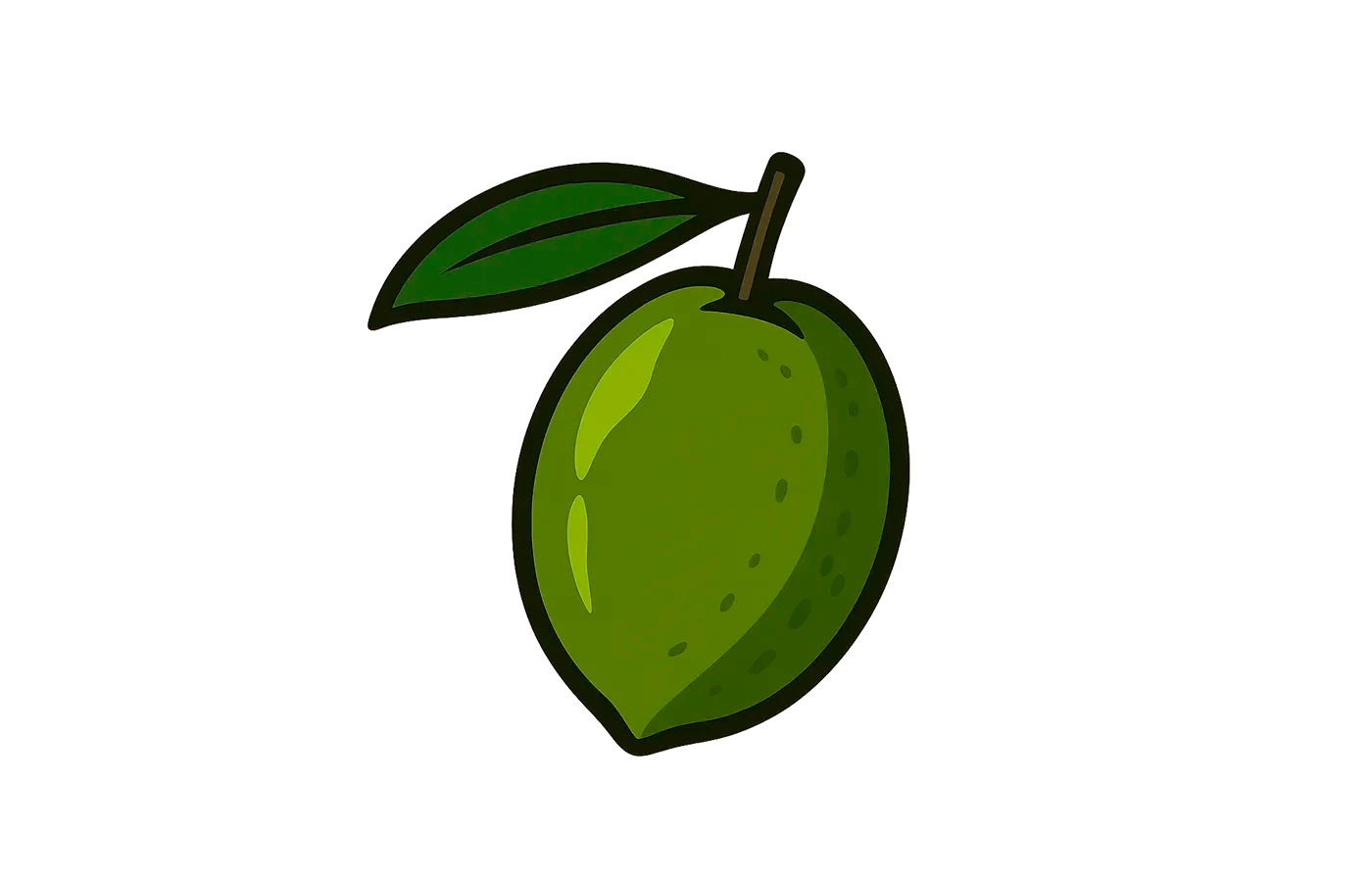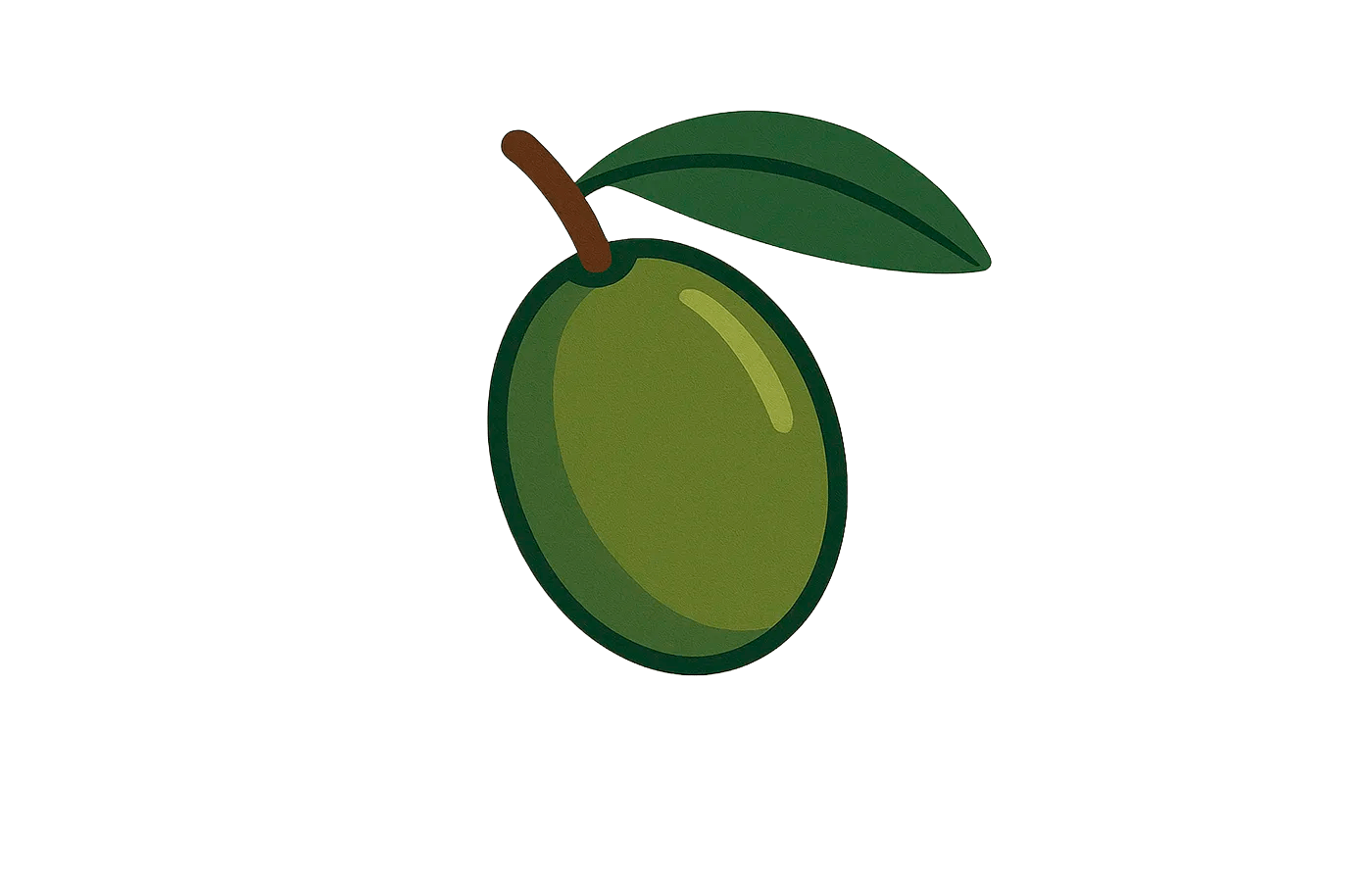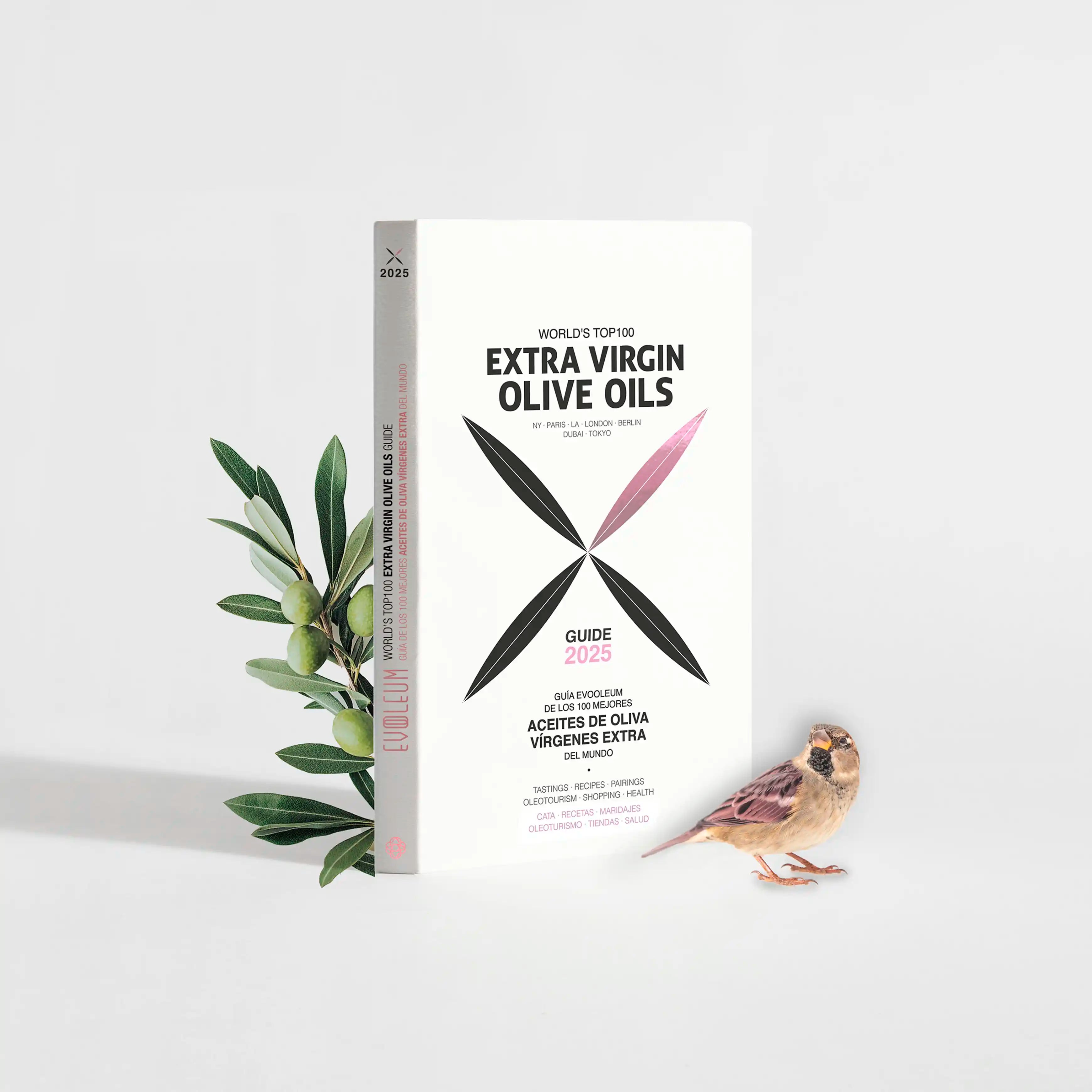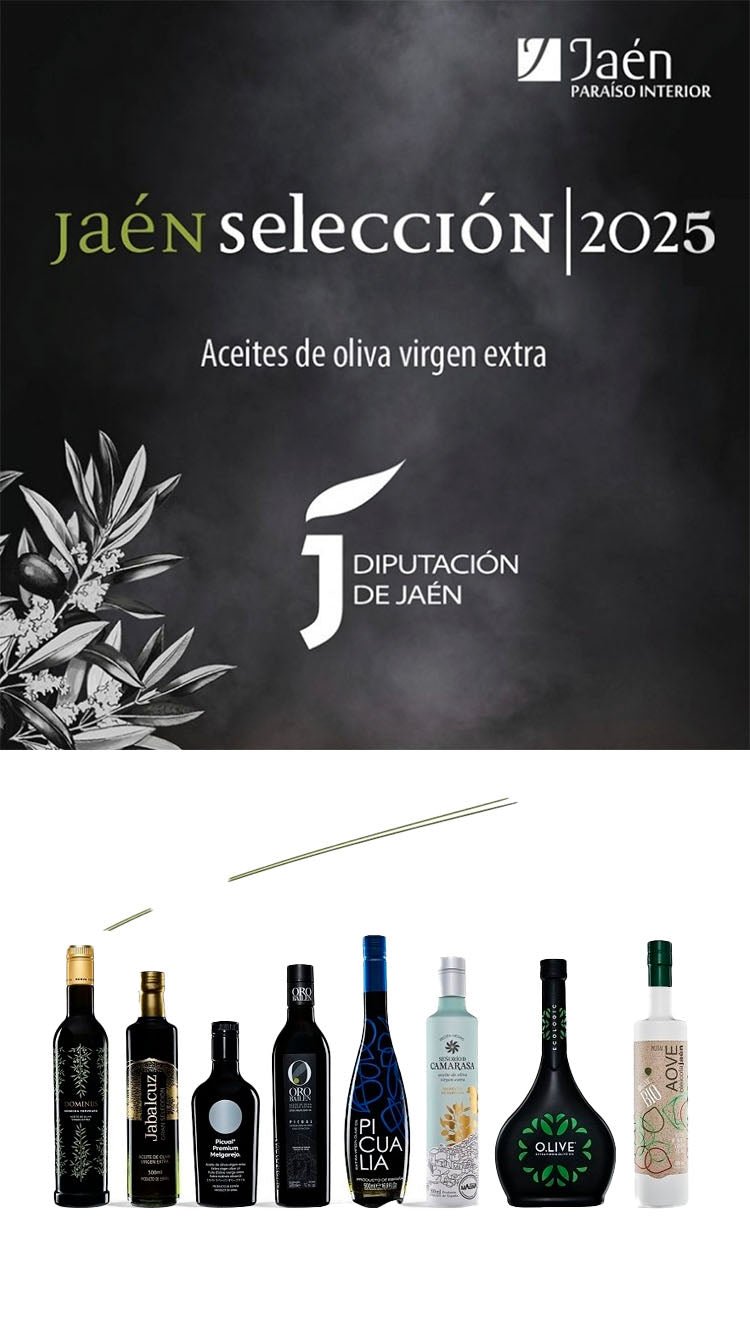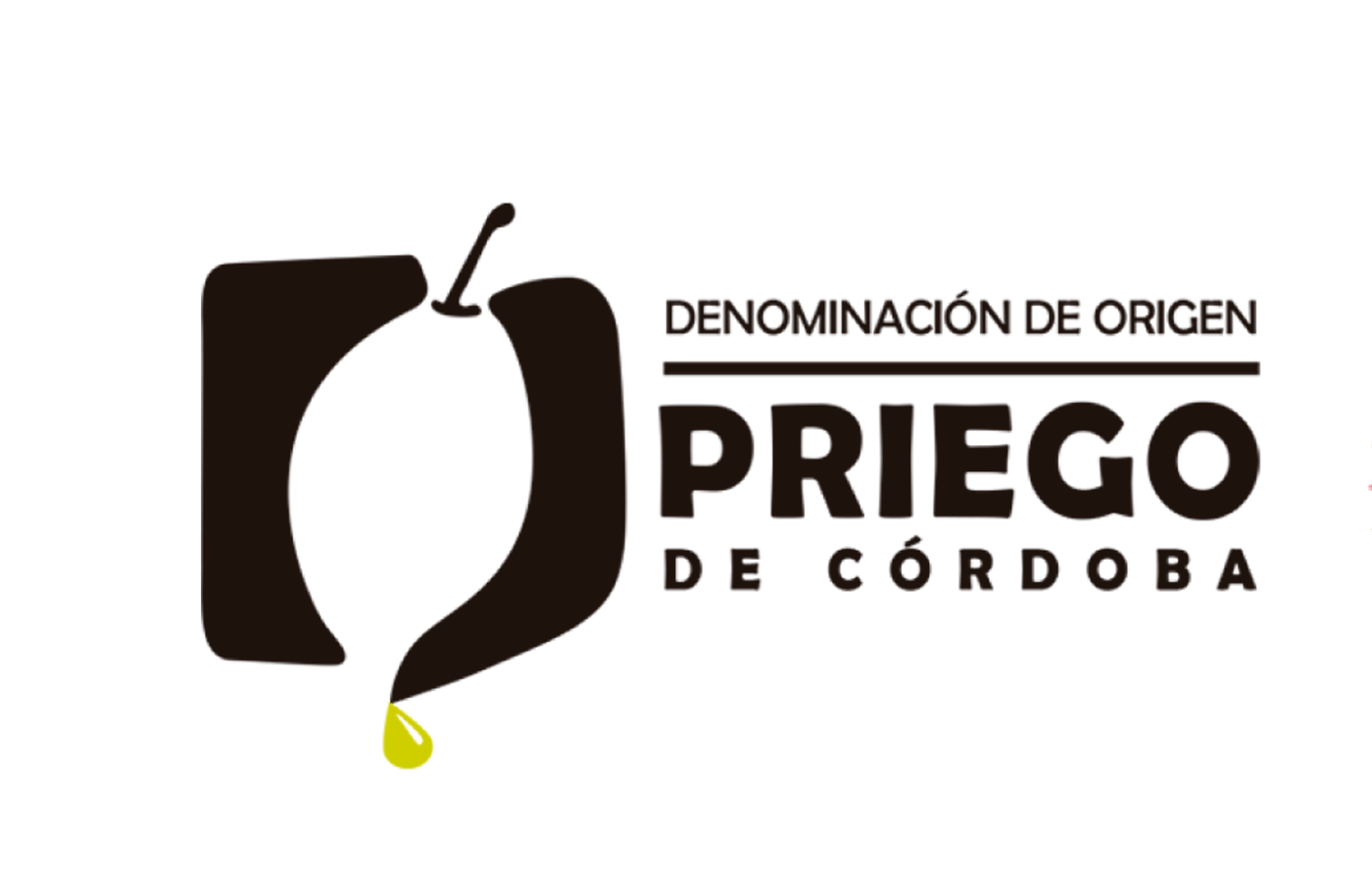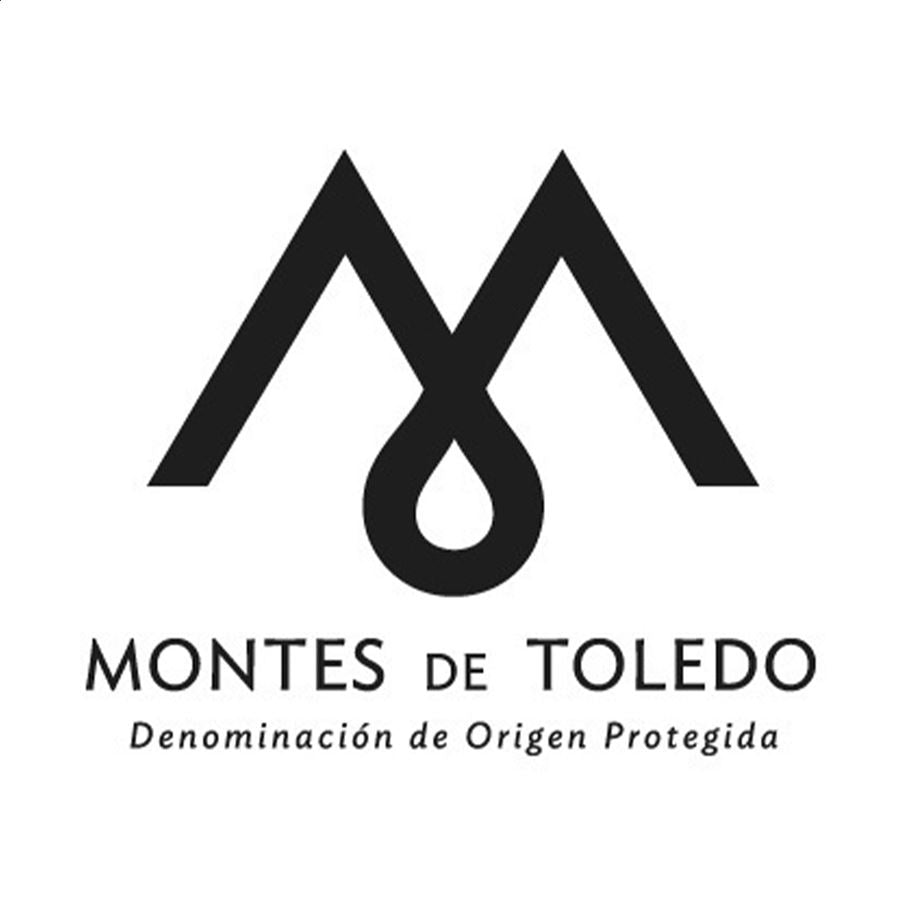Olive Oil Dictionary
We have prepared this olive oil dictionary as a supplement to our guide on Extra Virgin Olive Oil, explaining in detail the most commonly used terms in the olive oil world.
Types of Oil and Commercial Categories
Extra Virgin Olive Oil (EVOO)
Oil obtained solely by mechanical means, directly from healthy, fresh olives. It is the highest quality, free of sensory defects, with a fruity flavor and a maximum acidity of 0.8%.
Virgin Olive Oil
Obtained only by mechanical methods; it may have slight sensory defects that are generally unnoticed by consumers. Its acidity must not exceed 2%.
Lampante Oil
Virgin oil with significant sensory defects and acidity above 2%, making it unsuitable for direct consumption. It must be refined before use as food.
Refined Oil
Oil obtained from lampante oil, chemically treated to remove unpleasant odors, flavors, and colors. It is not consumed directly but blended with virgin oil.
Olive Oil (Blend)
Product resulting from blending refined oil with a proportion of virgin or extra virgin oil, offering a milder, balanced taste suitable for everyday use.
Olive Pomace Oil
Obtained by chemical extraction from pomace (olive solid residues). After refining, it is mixed with virgin oil, making it suitable for consumption, though with lower sensory quality.
Unfiltered Oil
Extra virgin oil that is not filtered after extraction, retaining natural particles that provide greater intensity of flavor and aroma, but reducing storage stability. Learn more about unfiltered EVOO.
Cold Extraction / First Cold Press
Extraction methods that ensure oil is obtained at temperatures below 27 °C, preserving its organoleptic and health properties.
Production Processes
Harvesting
Picking olives by hand or mechanically, a crucial step for final oil quality.
Crushing
Crushing olives into a paste to facilitate oil extraction.
Malaxation
Slow, controlled mixing that merges small oil droplets into larger ones, easing later separation.
Pressing / Centrifugation
Methods to separate oil from solid and liquid components. Centrifugation is now predominant for its efficiency; pressing is rarely used, mainly in some African countries.
Filtration
Removal of organic matter from the oil to improve appearance, flavor, and stability.
Storage
Keeping oil in containers protected from light, heat, and air to preserve its properties.
Bottling
Bottling or packaging oil in light- and air-proof containers to extend freshness.
Quality Parameters
Free Acidity
Measures initial fruit quality and extraction efficiency. Low values indicate healthy olives and prompt processing.
Peroxide Index
Indicates the initial level of oil oxidation. Low levels reflect freshness and proper storage.
UV Absorbance (K232, K270)
Indicators of primary and secondary oxidation, essential to assess freshness and purity.
Polyphenols
Natural antioxidant compounds that determine sensory (bitterness, pungency) and nutritional quality, related to stability and health benefits.
Ethyl Esters
Markers of unwanted olive fermentation before extraction, indicating lower quality.
Sensory Analysis (Tasting)
Fruitiness
Aroma notes that evoke fresh olives, essential in high-quality oils.
Bitterness
A taste sensation associated with fresh, polyphenol-rich oils, reflecting quality and health benefits.
Pungency
A peppery sensation in the throat and mouth, valued as an indicator of freshness and high phenolic content.
Defects
Unpleasant flavors and odors indicating issues in raw material or production, such as fusty, musty, rancid, or vinegary notes.
Tasting Panel
A trained group of experts who officially evaluate oils to determine their commercial category per regulations.
Olive Varieties
Picual
A robust, powerful oil with high phenolic content, bitter and pungent, very stable against oxidation.
Arbequina
A mild, sweet, delicate oil with ripe fruit notes of almond and apple, less stable but highly appreciated raw.
Hojiblanca
A balanced oil with moderate bitterness and pungency, fresh herb aromas, very versatile in cooking.
Cornicabra
An aromatic oil with medium-intense fruitiness, well-balanced bitterness and pungency, excellent stability.
Picudo
A delicately sweet oil with ripe notes and low bitterness, ideal for those seeking milder flavors.
Empeltre
A very mild, sweet oil with ripe fruitiness, ideal for raw consumption due to its delicate flavor.
Koroneiki
A Greek variety with intense green fruitiness, notably pungent and bitter, prized for its excellent stability.
Regulations and Certifications
International Olive Council (IOC)
International body setting global standards for olive oils and table olives.
EU Regulations
European rules defining quality, labeling, and marketing requirements for oils.
Protected Designation of Origin (PDO)
European certification guaranteeing quality and specific geographic origin.
Protected Geographical Indication (PGI)
Label certifying region-linked characteristics, though with less strict criteria than PDO.
Organic Farming
Certification excluding synthetic chemicals, protecting biodiversity and the environment.
Gastronomic Terms
Coupage
Strategic blending of different oils to achieve specific sensory profiles.
Monovarietal
Oil made exclusively from one olive variety to highlight its characteristics.
Pairing
Culinary combination of oil with dishes to mutually enhance flavors.
Raw Use
Direct consumption without cooking to fully enjoy flavor and aroma.
Frying
Cooking technique where olive oil stands out for its thermal stability.
Sauté
Mediterranean base of vegetables slowly cooked in olive oil.
Dressing
Simple seasoning of cold dishes with raw oil.
Confit
Slow, low-temperature cooking in oil, preserving flavor and texture.
Textures (foams, emulsions)
Culinary innovation using olive oil to create new sensory experiences.
Share
